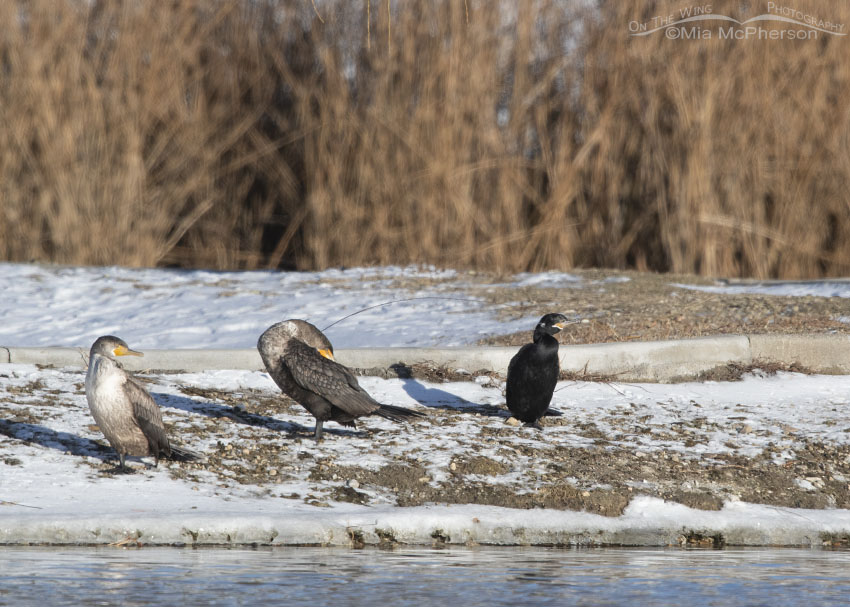
Neotropic Cormorant Images, Facts and Information:
Nannopterum brasilianum used to be Phalacrocorax brasilianus
- Neotropic Cormorants are small, dark waterbirds with long tail, webbed feet, long necks, small heads and bright green to aquamarine colored eyes. They have yellow-gray hooked bills with a yellow “V” shaped gular pouch edged in white.
- Some Neotropic Cormorants are year round residents in their range, others are migratory. They can be found in many southern U.S. states, much of Mexico and Cuba. They seem to be expanding their range because they are spreading northward. Neotropic Cormorants prefer saltwater inlets and bays and freshwater ponds and lakes.
- Neotropic Cormorants feed on fish, frogs, and other aquatic organisms. They are the only cormorants know to plunge dive for prey.
- Neotropic Cormorants lay 2 to 6 eggs which hatch in 23 to 26 days. Both sexes incubate and they are monogamous, colonial nesters.
I hope you enjoy viewing my Neotropic Cormorant photos.
Resting Neotropic Cormorant
Title: Resting Neotropic Cormorant
Location: Hagerman National Wildlife Refuge, Grayson County, Texas
Date: 5/24/2024
Neotropic Cormorant at Hagerman National Wildlife Refuge
Title: Neotropic Cormorant at Hagerman National Wildlife Refuge
Location: Hagerman National Wildlife Refuge, Grayson County, Texas
Date: 5/24/2024
January sighting of a Neotropic Cormorant
Title: January sighting of a Neotropic Cormorant
Location: Salt Lake County, Utah
Date: 1/1/2019
Very late Neotropic Cormorant
Title: Very late Neotropic Cormorant
Location: Salt Lake County, Utah
Date: 1/1/2019
Neotropic and Double-crested Cormorants on New Year’s Day
Title: Neotropic and Double-crested Cormorants on New Year’s Day
Location: Salt Lake County, Utah
Date: 1/1/2019
Winter Neotropic Cormorant close to home
Title: Winter Neotropic Cormorant close to home
Location: Salt Lake County, Utah
Date: 1/1/2019






